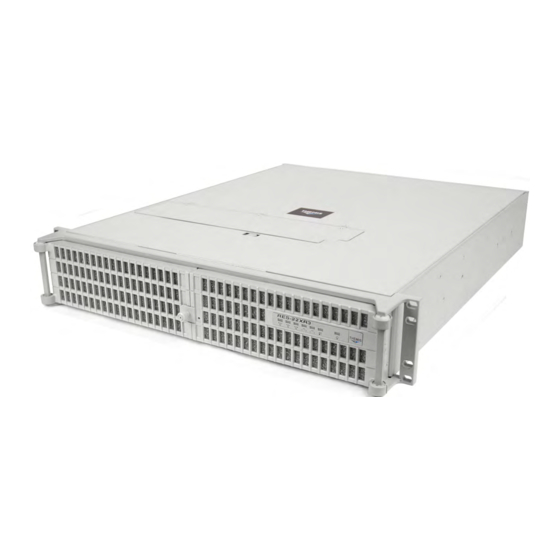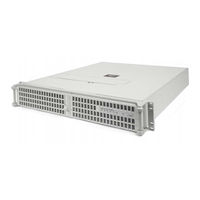
User Manuals: Themis RES-22XR3 Rackmount Server
Manuals and User Guides for Themis RES-22XR3 Rackmount Server. We have 4 Themis RES-22XR3 Rackmount Server manuals available for free PDF download: Installation Manual
Themis RES-22XR3 Installation Manual (158 pages)
2RU 19” Rack-Mount Rugged Enterprise Server with X8DTN+ Motherboard Configuration /Two Quad/Dual-Core 5500 or Quad/Six-Core 5600 Xeon CPUs
Table of Contents
-
Preface
21 -
-
Overview29
-
-
General43
-
Electrical44
-
-
-
-
-
PCI Cards55
-
Power Supply62
-
Rack Mounts65
-
Operation66
-
-
-
Introduction69
-
-
-
C1E Support75
-
C3 State77
-
C6 State77
-
-
Clear NVRAM86
-
-
Floppy a88
-
Flow Control89
-
NUMA Support93
-
WHEA Support93
-
Exit Options99
-
BIOS Recovery101
-
Advertisement
Themis RES-22XR3 Installation Manual (162 pages)
2RU 19" Rack-Mount Rugged Enterprise Server with X8DTH-iF/X8DTH-6F Motherboard Configuration/Two Quad/Dual-Core 5500 or Quad/Six-Core 5600 Xeon CPUs
Table of Contents
-
Preface
23 -
-
Overview31
-
-
General45
-
Electrical46
-
-
-
-
-
PCI Cards57
-
Power Supply64
-
Rack Mounts67
-
Operation68
-
-
-
Introduction71
-
Main Setup73
-
-
-
CPU Ratio77
-
C1E Support79
-
ACPI T State80
-
Memory Mode81
-
Intel I/OAT82
-
Intel VT-D82
-
-
Clear NVRAM87
-
-
Flow Control89
-
NUMA Support94
-
WHEA Support94
-
-
-
Storage Drives101
-
Removable Drives102
-
CD/DVD Drives102
-
Exit Options103
-
BIOS Recovery105
-
Themis RES-22XR3 Installation Manual (142 pages)
2RU 19" x17" Rack-Mount Rugged Enterprise Server with X8SAX Motherboard Configuration/One Quad-Core 5500 or Quad/Six-Core 5600 Xeon CPU
Table of Contents
-
-
Preface
21
-
-
-
-
PCI Cards53
-
-
Power Supply61
-
Rack Mounts63
-
Operation64
-
-
-
Introduction67
-
-
-
CPU Ratio73
-
C-STATE Tech75
-
C1E Support75
-
ACPI T State76
-
-
Memory Mode77
-
Intel VT-D78
-
Intel I/OAT79
-
-
Clear NVRAM83
-
-
Suspend Mode90
-
Exit Options95
-
-
Advertisement
Themis RES-22XR3 Installation Manual (144 pages)
Configuration 3
2RU 19” Rack-Mount Rugged Enterprise Server
with X8DT3/-F/-LN4F Motherboard Configuration
/ Two Quad-Core 5500 or Quad/Six-Core 5600 Xeon CPUs
Table of Contents
-
Preface
21 -
-
Overview29
-
Figure30
-
Power Supply41
-
-
-
-
PCI Cards55
-
Power Supply61
-
Rack Mounts62
-
Operation64
-
-
-
Introduction67
-
Main Setup69
-
-
-
C1E Support72
-
-
Memory Mode75
-
Air Flow76
-
-
-
Clear NVRAM82
-
-
Flow Control84
-
-
Subnet Mask92
-
VLAN Tagging92
-
-
Exit Options98
-
BIOS Recovery100
-



